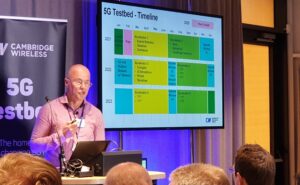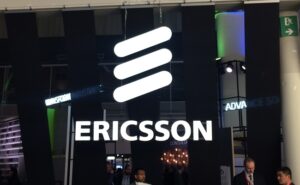Industry collaboration will be key to security in the 5G era. The sharing of network infrastructure could help operators to deliver new services faster, at lower cost. 5G continues to highlight the necessity of investment in all-fibre networks. Machine Learning is certain to form part of our 5G future.
These were among the key conclusions of a meeting of Chief Technology Officers (CTOs) held earlier this week in Budapest, Hungary, in conjunction ITU Telecom World 2019.
CTOs highlighted that standardization and open-source projects both stand to benefit from close interaction.
They also suggested that a ‘5G observatory’ to share lessons learnt from 5G testbeds and early commercial deployments could assist developing countries in gaining greater clarity around the business opportunities presented by 5G.
With a view to discussing industry needs and associated standardization priorities, the meeting brought together representatives of companies including China Mobile, du, Ericsson, Fujitsu, Futurewei Technologies, Global Voice Group, Huawei, Juniper Networks, Nokia, NTT, Orange, Rohde & Schwarz, Symantec, Telkom Indonesia, TELUS, Tunisie Télécom, UNITEL and Verizon.
The meeting issued a communiqué summarizing trends in information and communication technology (ICT) of growing relevance to ITU standardization.
< Download the CTO meeting communique >
5G era security
5G security will demand significant industry collaboration and well-coordinated contributions from a wide range of standards bodies.
CTOs considered the ‘Ottawa Accord’, a set of security priorities developed in June 2019 by network operators, standards bodies and industry associations.
The CTO meeting endorsed the findings of the Ottawa Accord in relation to three security priorities:
- Global threat exchange: Common understanding of security threats and common terminology to enable the sharing of threat intelligence.
- Best practices for operational security: Best practices for 5G security and widespread commitment to infrastructure protection.
- Security Incentives: Measurement schemes based on agreed metrics could bring attention to prevailing levels of security and create incentives for investment in security.
CTOs also considered that a holistic approach to 5G era security could receive valuable support from a global centre for the development of security solutions and their testing and assurance. Such a ‘living lab’ open to multiple interested parties, said CTOs, could bring cohesion to 5G security efforts as well as reduce the costs of testing security solutions.
Network infrastructure sharing
Infrastructure sharing can assist network operators in reducing time-to-market for new solutions and in gaining cost efficiencies. CTOs illustrated potential scenarios for the sharing of infrastructure such as core networks, central offices, backhaul infrastructure, and towers and radio access networks.
CTOs considered an example of ‘Multi-Core Operator Networks’, networks said to be capable of reducing an operator’s infrastructure investments by as much as 50 per cent and also enable improvements in network performance.
Business rationale for 5G deployment
5G will support enhanced mobile broadband, massive-scale Internet of Things, and ultra-reliable and low latency communications for applications such as Virtual Reality and automated driving. It presents a key opportunity for network operators to serve consumers as well as other industry sectors.
But 5G deployment calls for considerable investment, leading CTOs to highlight that network operators – particularly in developing countries – may benefit from greater clarity around the business opportunities presented by 5G.
CTOs thus suggested that ITU consider the establishment of ‘5G observatory’ to share lessons learnt from 5G testbeds and early commercial deployments.
Fibre future
CTOs with experience in the early commercial deployment of 5G reiterated the importance of investment in fibre. Fibre-optic networks form the ‘backbone’ of the Information Society. Investment in fibre continues to rise, with fibre recognized as the key infrastructure underlying today’s ultra-broadband Gigabit era.
Recognizing ITU’s leadership in the standardization of fibre-optic networks, technologies and infrastructures, CTOs encouraged ITU to support industry in taking full advantage of ITU-standardized Fibre to the Home (FTTH) technologies.
Regulatory perspective on Quality of Service and Experience (QoS and QoE)
A more homogeneous environment for the assessment of QoS and QoE would deliver key benefits to national regulators, said CTOs.
The shift to packet-based communications and the increasing importance of over-the-top (OTT) applications introduces new challenges to the assessment of QoS and QoE. The prices of data and data-enabled devices are decreasing, making these assessment challenges progressively more relevant to developing countries.
CTOs recognized the value of ITU’s technical guidance to regulators on QoS and QoE, highlighting that collaboration in standardization builds common understanding and trust between regulators and network operators.
Towards intelligent networks
Machine Learning holds great promise to enhance network management and orchestration. Drawing insight from network-generated data, Machine Learning can yield predictions to support the optimization of network operations and maintenance.
This optimization is becoming increasingly challenging, and increasingly important, as networks gain in complexity to support the coexistence of a diverse range of ICT services. Here CTOs expressed support for the work of the ITU-T Focus Group studying Machine Learning’s contribution to 5G and future networks.
Interaction between standardization and open source
The use of open source in the development of both software and hardware will add value to standardization activities, said CTOs, activities that must be capable of supporting technological as well as business aspects of open-source development.
CTOs discussed examples of successful ITU interaction with open-source communities, highlighting the value of this interaction to both standardization and open-source projects. Proactive interaction, said CTOs, can result in working instances of standards and practical feedback to standardization projects, as well as standard-compliant code to open-source projects.
Source of Article



